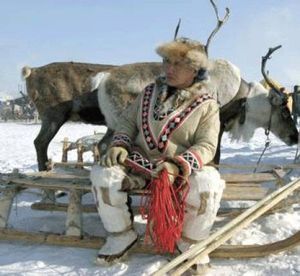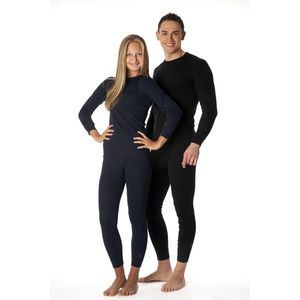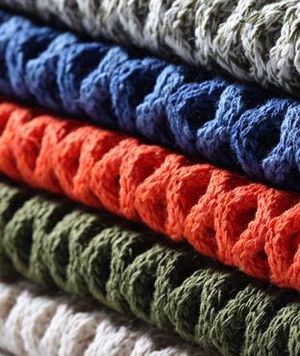 When engaging in winter sports, one inevitably thinks about how to stay warm. Everyone tackles this problem differently. Some refrain from taking up activities until spring, others decide to pile on as many layers as possible… And some start thinking about WHAT kind of clothing they should wear.
When engaging in winter sports, one inevitably thinks about how to stay warm. Everyone tackles this problem differently. Some refrain from taking up activities until spring, others decide to pile on as many layers as possible… And some start thinking about WHAT kind of clothing they should wear.
The thermal insulation of clothing depends on several factors. The first is the amount of air in the space under your clothing. This includes the layers of air between pieces of clothing, the layers of air within the fabric itself between its threads, and the tiny bubbles of air inside the fibers and threads. It is this air, with its low thermal conductivity, that preserves our body heat, especially if it can circulate without escaping outward or letting cold air from outside get in. To increase the thermal insulating properties of your clothes, therefore, you need to create as many layers of immobile air as possible—meaning wearing multiple layers of thick garments, preferably made of fibers that themselves contain air (cotton, wool, and some types of synthetics).
Learn about the features a winter sleeping bag should offer in our article on how to choose a sleeping bag for hiking.
It turns out that computer games can help overcome a fear of heights. Read more about this in our article.
The second factor is the amount of moisture. The body always breathes through the skin, releasing moisture, but when physical exertion increases—like when we move quickly—sweat is produced more intensively. This is a completely normal reaction, but in cold weather, unfortunately, moisture evaporation from the skin can lead to colds—or worse, hypothermia. In other words, it’s necessary to either reduce sweating (not always possible, especially when wearing several layers of clothing) or at least ensure that the skin stays as dry as possible.
Among all the materials historically available to humans, only natural wool possesses this property. Wool can absorb water up to 30% of its dry weight while remaining dry to the touch and retaining its insulating properties.
However, once this 30% limit is exceeded, woolen garments become damp, and warmth is no longer guaranteed. For some time, it can still retain heat due to the “warm” water within, but eventually, moisture will start evaporating, seeping into the fabric of the outer layers of clothing, and gradually it will become very cold. Wet clothing only keeps divers warm, and only if it’s a wetsuit. Thus, base layers made of pure wool address the problem of insulation very well, but only for a few hours.
 The people of the North found the ideal solution to this dilemma, inventing reindeer fur jumpsuits with the fur turned inward. Reindeer fur consists of thick, rubbery hairs with large air chambers inside. It doesn’t tickle but is brittle. When touching the skin, the tip of the fur absorbs moisture, skin oils, and so on, after which it becomes less strong and breaks off, falling away. This means that until the fur is completely worn down, only perfectly clean, dry, and insulating fur touches the skin. Moreover, since the skin is constantly massaged and automatically cleansed of sweat, it remains dry and clean (this is precisely why Northern peoples don’t need to bathe as frequently as Europeans whose clothing lacks such hygienic properties).
The people of the North found the ideal solution to this dilemma, inventing reindeer fur jumpsuits with the fur turned inward. Reindeer fur consists of thick, rubbery hairs with large air chambers inside. It doesn’t tickle but is brittle. When touching the skin, the tip of the fur absorbs moisture, skin oils, and so on, after which it becomes less strong and breaks off, falling away. This means that until the fur is completely worn down, only perfectly clean, dry, and insulating fur touches the skin. Moreover, since the skin is constantly massaged and automatically cleansed of sweat, it remains dry and clean (this is precisely why Northern peoples don’t need to bathe as frequently as Europeans whose clothing lacks such hygienic properties).
Nevertheless, while fur jumpsuits are ingenious, they are not accessible to everyone for various reasons. To address the insulation needs of ordinary extreme sports enthusiasts and winter explorers, clothing developers have taken steps to minimize the harmful effects of moisture.
Since simply removing or absorbing moisture into the material proved impractical, they decided to combine the properties of different materials in one garment. Synthetics, in principle, cannot absorb water—they are hydrophobic. When in contact with the skin, a layer of synthetic material can get wet quickly but can also dry just as quickly if something actively pulls the moisture away from it.

For sports where retaining heat for an extended period is crucial, multi-layered garments have been developed. The layer closest to the skin is typically synthetic, followed by a layer of wool. Wool absorbs moisture from the synthetic layer and stores it, leaving the synthetic material and skin dry, while the wool stays conditionally dry. There is no airflow that could cause heat loss. Sometimes, a third layer is added. Unsurprisingly, this lightweight, body-hugging piece can easily replace several layers of regular clothing.
Camping is a designated space for a tent city. What is camping on wheels ? Read about it in our article.Want to learn parkour? Check out our material for beginners.
Here , we explain what an azimuth is and how to use a compass.
Sports Thermal Underwear
Thermal underwear doesn’t generate heat on its own; it helps retain the body heat we produce while being active. However, levels of activity can vary greatly, so different types of thermal underwear have been developed for specific sports.
Running thermal underwear is completely synthetic and moisture-wicking. While running, it’s nearly impossible to get cold – a trained athlete can run for hours (especially if they snack on high-calorie foods along the way) but will sweat intensely. It’s essential to wick moisture quickly and as thoroughly as possible from the skin. Otherwise, once they stop, the athlete will quickly risk hypothermia.
For low-activity sports, the focus is on a layer that reduces heat loss – in other words, wool. Thermal underwear for such activities contains little synthetic material, and the thin layer that touches the skin is often looped or woven. These garments may include synthetic fibers, cotton, or merino wool. Woolen thermal underwear is also perfect for hunting and fishing.
Simply put, the more synthetic material the underwear contains, the faster you’ll get cold when standing still in the frost. You’ll stay warmer for longer – but only if you’re moving.
It’s important to remember that cotton absorbs sweat and moisture quickly, meaning it gets damp just as rapidly. Such models are not suitable for prolonged wear, though they may feel more comfortable on the skin.
If you have a wool allergy, opt for thermal underwear made with chito-fiber. It typically has three layers – chito-fiber, polyester, and modal (a cellulose-based fiber similar to viscose). This combination is suitable for everyday wear and low-activity sports.
How to Choose the Best Thermal Underwear
Some of the top brands producing thermal underwear include Kratex (USA), Janus (Norway), Guahoo (Finland), NORVEG (Germany), Joha (Denmark), ODLO (Switzerland), Ketch (Sweden). These brands offer extensive product lines, but it’s challenging to select clothing from a catalog alone. It’s best to try the item on to see if you like its feel and fit. Sometimes models from one brand fit perfectly, but items with similar traits from another manufacturer might feel uncomfortable.
When buying, carefully inspect the seams (they should have no loose threads, bumps, or gaps – all of which can be problematic during wear) and the fabric’s surface touching the skin. Avoid taking risks, as scratching while skiing in sub-zero temperatures is far from convenient!
Thermal Underwear for Women and Men

Men’s and women’s thermal underwear differs anatomically – size, chest volume, hip width. Men’s options often feature more insulated models, while women’s designs may also include purely non-sport versions like shorts to wear under skirts or thin pullovers with necklines suitable for blouses. Issues arise for unique body proportions (for instance, finding a snug base layer for bodybuilders or achieving an even fit for women with very full busts and narrow waists). However, in most cases, it’s possible to put together a matching set, sometimes mixing and matching tops and bottoms.
A motorized hang glider is a type of aircraft. Some enthusiasts manage to build their own motorized hang gliders . Read more in the linked article.Check out the top 5 best aviation movies in our article .
Thermal Underwear for Newborns and Children Over Two Years Old

For children from birth to 1.5 years old, insulating thermal underwear with at least 50% natural fibers is recommended – ideally, made of 100% wool or a blend of silk and wool or cotton. For babies, there are also two-layer models – the inner layer is cotton, while the outer layer is wool. Paired with an outer snowsuit, this ensures that an infant won’t get cold even during long walks.
For highly active children starting from age two, moisture-wicking thermal underwear with synthetic material (polypropylene, polyester, elastane, etc., combined with cotton and a middle layer of wool) is recommended.
For very active kids, pure synthetic options can work, paired with a layer of wool clothing on top.
How to Wash Thermal Underwear
Thermal Underwear Should Fit Like a Second Skin
(Thermal underwear essentially mimics the properties of a second layer of skin.) It is believed that thermal clothing needs to be replaced every one or two seasons, depending on usage. However, experience shows that products from reputable manufacturers can last for several seasons in a row. The vital factor in extending its lifespan is proper care. Avoid taking it to a dry cleaner — wool and synthetics require different solvents. Naturally, for expensive thermal underwear, they will likely use a single type of solvent, potentially cleaning the synthetic material but completely ruining the wool. Washing also has its nuances.
Wash no more than once a week — after wearing it, air it out and let it dry. Wool needs time to release accumulated moisture.

Wool does not respond well to alkaline environments. Most synthetic detergents have a strong alkaline reaction and often contain “built-in” bleach agents. These quickly deteriorate the fine wool fibers in thermal underwear.
How to Wash Thermal Underwear
Thermal underwear should be washed only by hand, and ideally with liquid soap or hair shampoo (because chemically, animal wool and human hair are nearly identical). Be sure to rinse thoroughly afterward. Rinse the washed garment 3–4 times in regular warm water, then once in water with a bit of vinegar added, and finally in clean, cool water.
Even traces of soap (let alone synthetic detergents) can irritate the skin while wearing the garment. Don’t wring or twist thermal underwear. At most, gently press out the water and lay it out to drain on a thick towel. Once it’s semi-dry, hang it to finish drying in the open air. Otherwise, the fabric can become deformed.
If you decide to use a washing machine, proceed at your own risk. Typically, a “delicate” cycle without spinning and with the use of antistatic agents is recommended. However, it’s always best to follow the care instructions on the product label.





